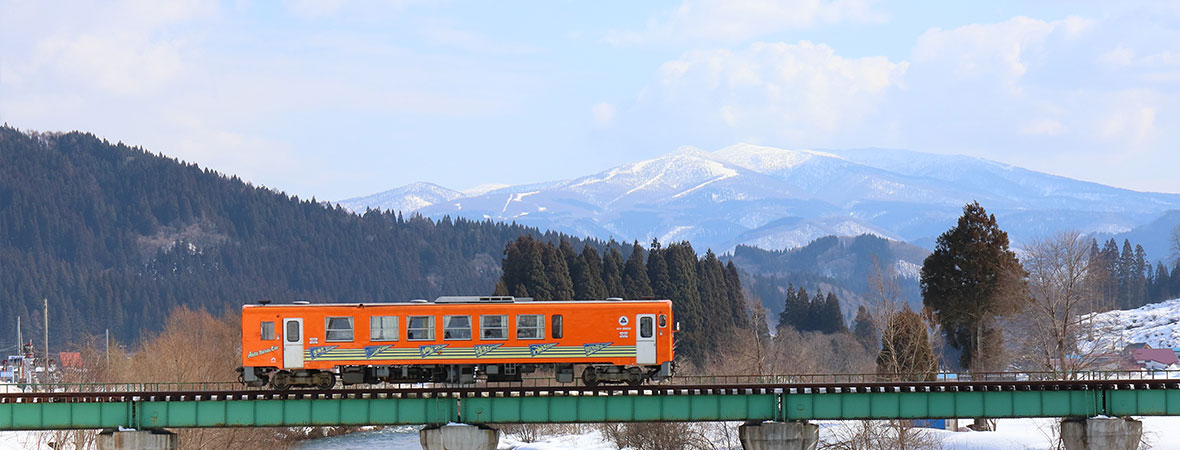The fifth taste, known as umami, was discovered by a Japanese man. One of the sources of this umami, fermentation, has been part of the Japanese diet since ancient times as a clever means of preserving food for long periods.
Blessed with good crop harvests through the ages, Akita prefecture has a particularly wide range of fermented foods designed to preserve the surplus over the cold winter. In addition to foods such as miso, soy sauce, natto (fermented soybeans), and sake that are eaten throughout Japan, there are many regional dishes that are only found in Akita.
In this sample itinerary, we will begin our journey at the inland city of Yokote, a place renowned for fermentation even in Akita, and introduce a wide variety of spots where visitors can eat their fill of traditional Akita cooking, including, of course, fermented foods. Enjoy a journey that lets you experience Akita’s culture through its delicious and nourishing cuisine.
Photograph: Yasufumi Ito (Creative Peg Works)
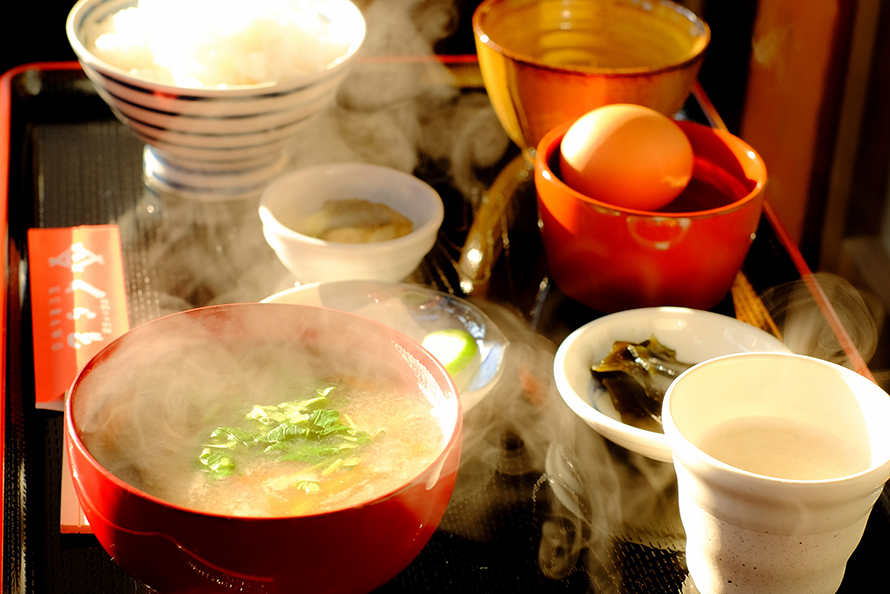
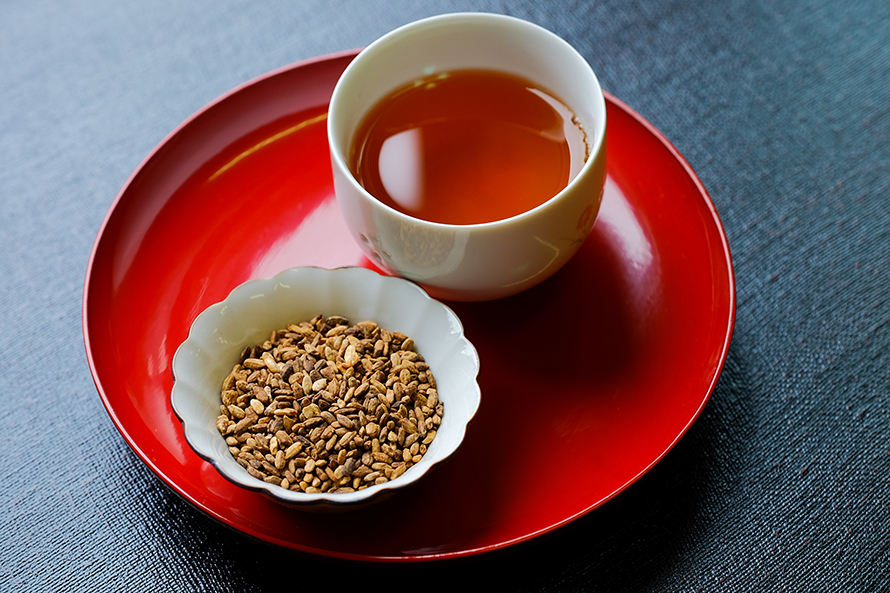
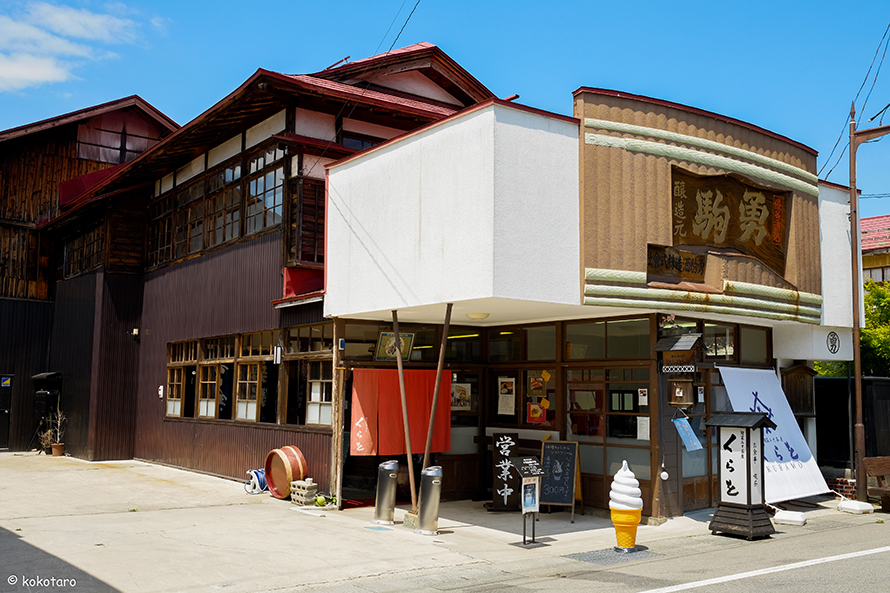
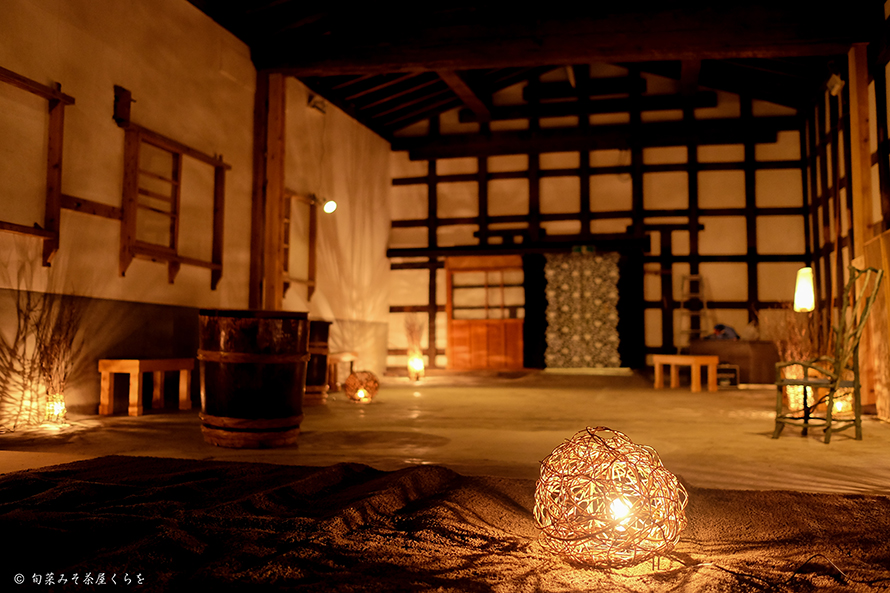




Shunsai Miso Chaya Kurawo is a teahouse and restaurant seven-minutes’ drive from the JR Ou Main Line’s Jumonji Station, situated inland in the southeast of Akita prefecture. The woman who runs the restaurant is the daughter of the owners of Habakojiten, a miso and koji manufacturer and retailer with an illustrious history stretching back more than 100 years. Koji, or malt, which can be made from rice (a product Akita is noted for) or other grains is, in a sense, the “source” of fermentation. At Kurawo, visitors can enjoy fermented dishes made from the Habakojiten’s rice koji malt and seasonal vegetables.
Yokote City, where Kurawo is located, has always been a region that uses a lot of rice koji, even relative to the rest of Akita, and koji producers have therefore played an important role in supporting the diet of locals. Habakojiten’s koji, produced carefully with the practiced skill of its artisans, is characterized by a natural sweetness that feels as if it diffuses right through the body.
Kurawo is housed in a building that was used as a sake brewery and store up until 2003. Built sometime around 1800, it still retains the original uchigura (a storehouse contained within the main building) of the kind unique to the snow county.
At Kurawo, they are still using the well water that was used to prepare sake in their cooking. Try menu items such as the tsukemono pickles made to recipes handed down from the previous generation, and the miso soup that combines miso paste, made using a generous amount of koji, with plenty of other ingredients.
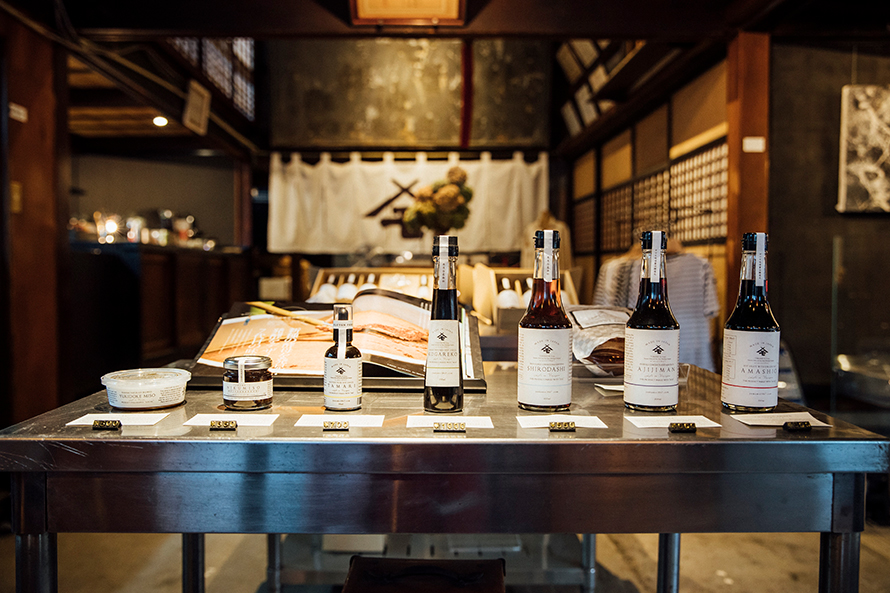
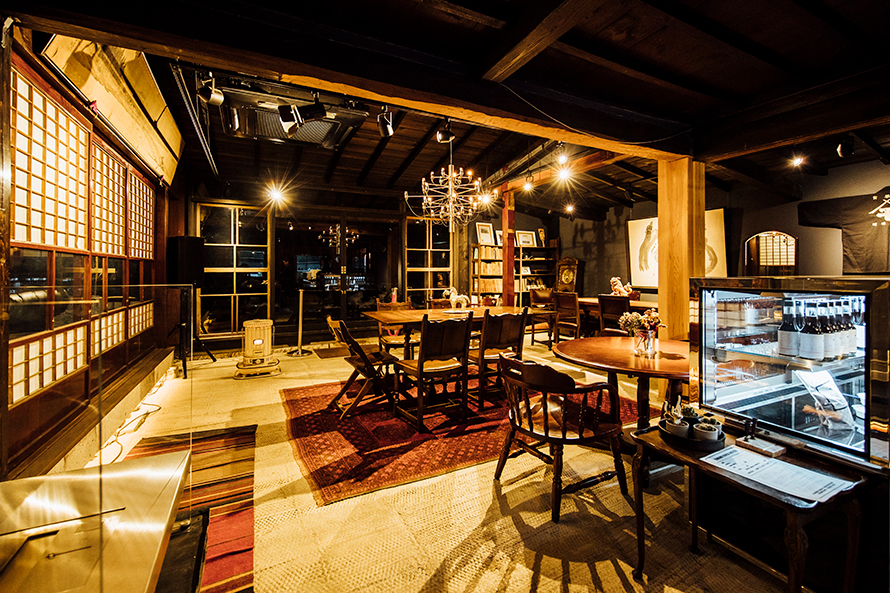
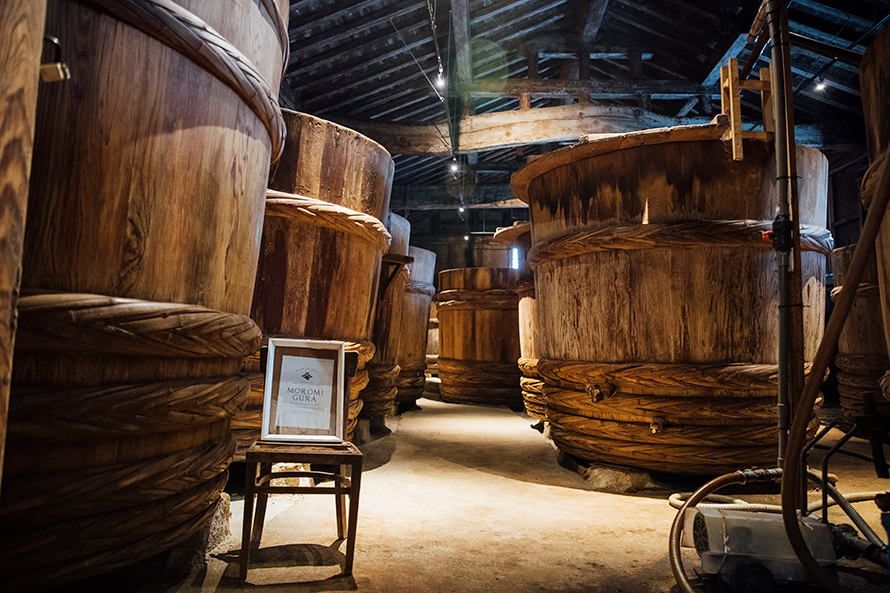
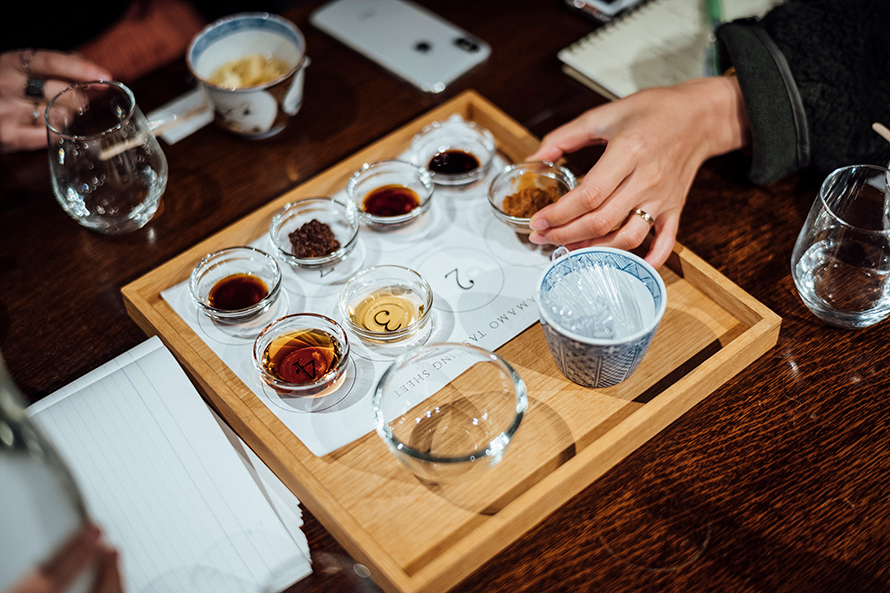
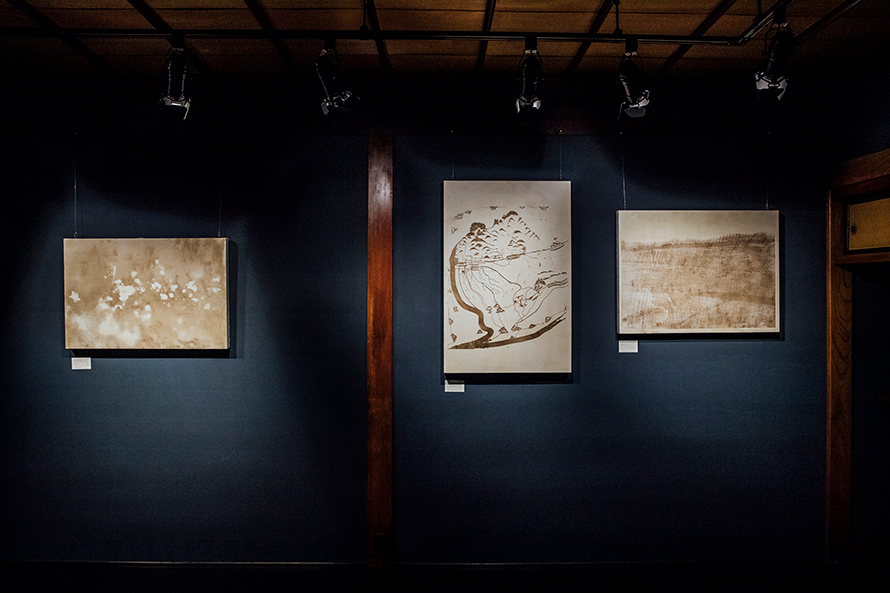
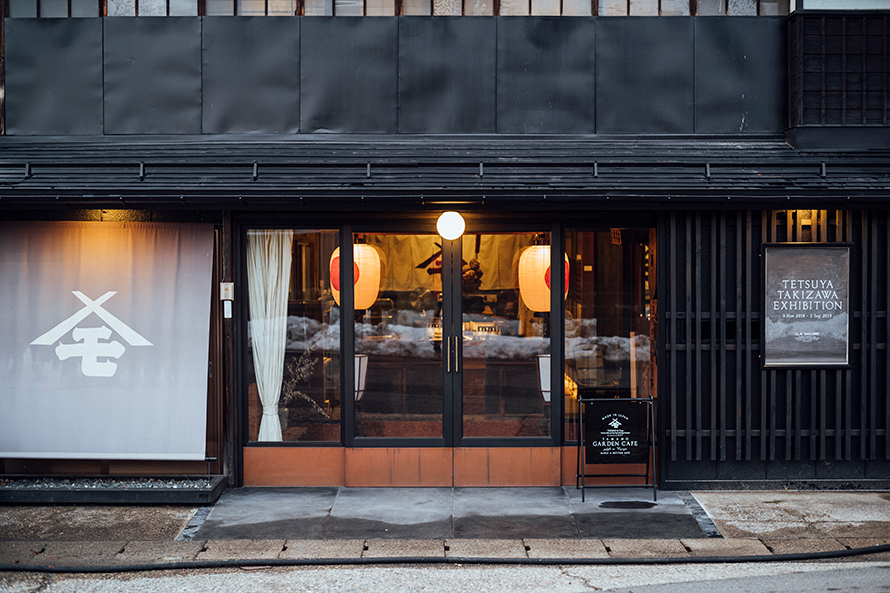






Founded in 1867, Yamamo Miso & Soy Sauce Brewing Company has been using the abundant local subterranean water supply to make soy sauce and miso for over 150 years. Yasushi Takahashi, the seventh in a long line of brewers, is pushing a raft of new initiatives. In 2018 he opened a café and art gallery and, in an unusual step for a miso and soy sauce brewery, began offering tours of the premises.
At the café, they take pride in their delectable coffee, soy gelato, desserts, pho noodles and other foods and beverages. They also select the perfect alcoholic beverage for your meal.
Visitors taking the brewery tour can visit both a warehouse using traditional methods, and one using an innovative approach. After a tour that takes in each of the steps involved in fermenting the soy sauce and miso paste, visitors can stroll in the gardens, wander through the gallery, and enjoy a soy sauce and miso tasting in the café. The warehouses, which have been used since the business was first established, are incredibly atmospheric, recalling the building’s long history to mind. You can purchase a little reminder of this history at the store where they sell miso and soy sauce as souvenirs.
Attractions abound at this brewery that offers multiple sensory experiences all in the same place.
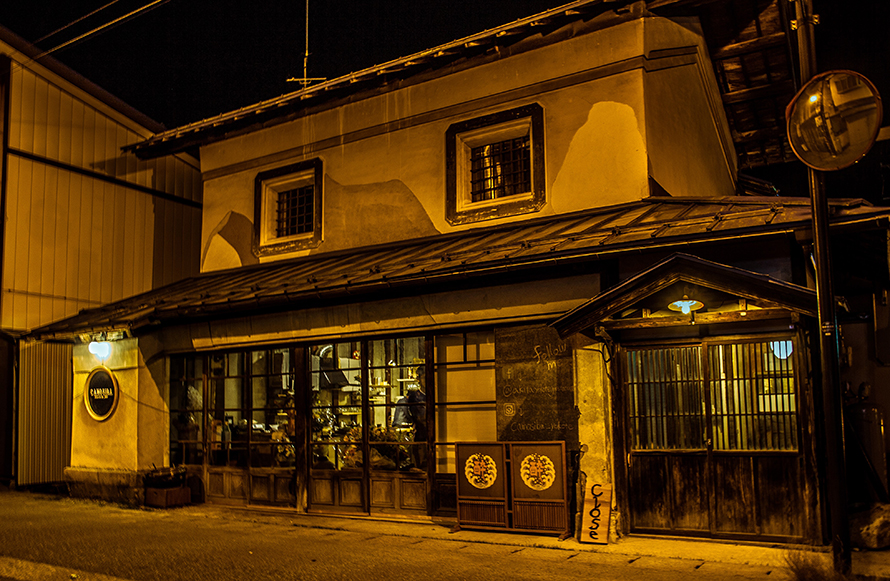
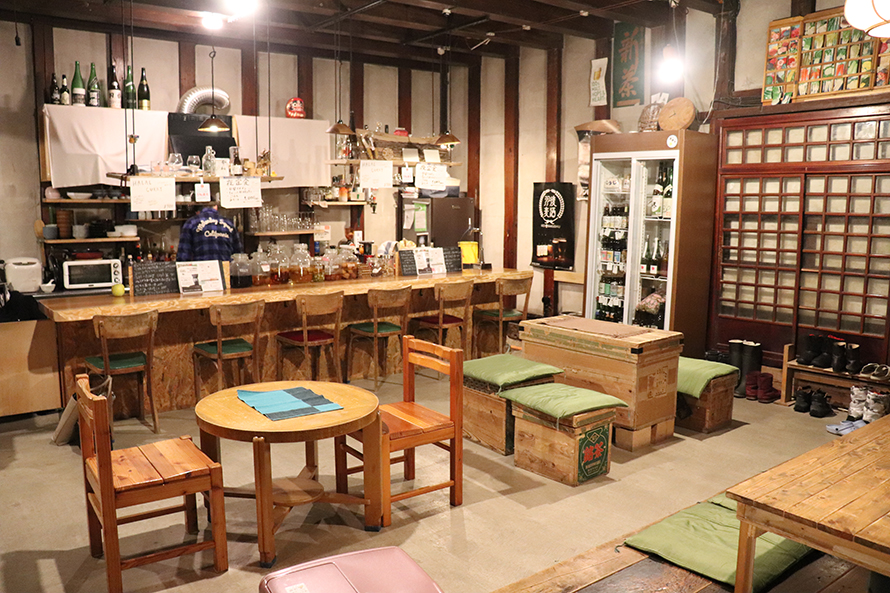
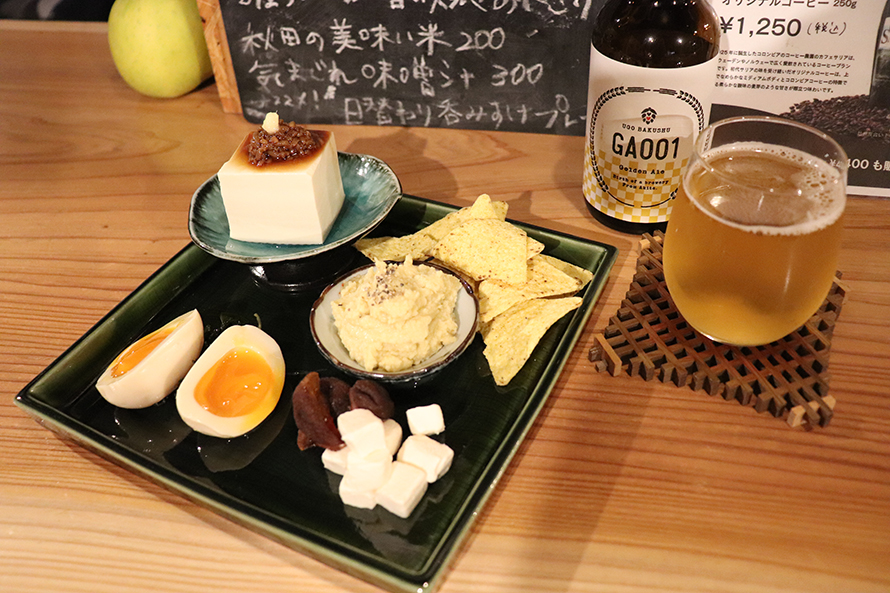
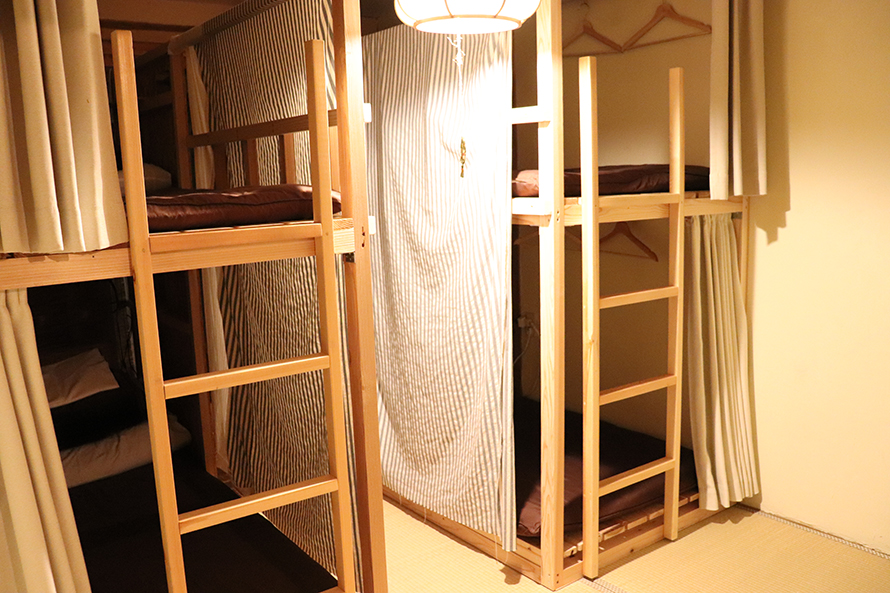
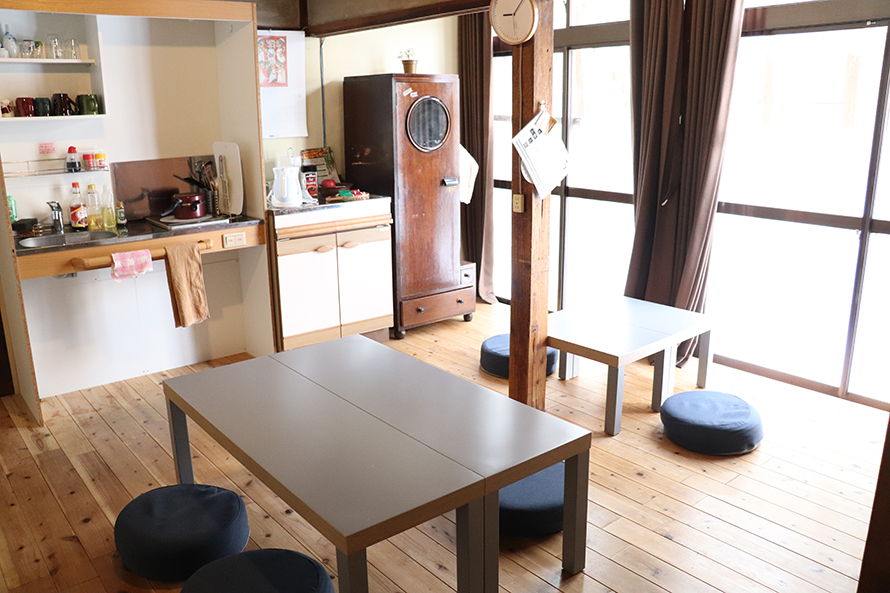





Jumonji Town, located at the crossroads of two highways, was once a bustling center thronged with travelers coming and going. In an attempt to revive that bustle of yesteryear, an old teahouse building was renovated and reopened in 2017 as Camosiba, a combined hostel and bar facility.
The owner, Madoka Abe, is the daughter of the family that runs Abekojiya, a miso producer situated in Jumonji. When you visit, pull up a seat at the bar and partake of items such as dishes prepared with Abekojiya’s miso and koji, local sake from Yokote, and craft beer produced by brewers Ugobakushu. Abe is also currently working on brewing hard cider (alcoholic sparkling cider) made from local apples, that is set to become a local specialty in the near future.
The name “Camosiba” is made up of the words “camosi (kamoshi)” meaning brew or ferment, and “ba,” meaning place. This naming signifies Abe’s hope that the locals and travelers who meet there will form relationships that brew over time to produce wonderful flavors in the same way as the miso and soy sauce that are the bar’s specialty. Take time out to enjoy the delicious food, alcoholic beverages and, of course, the company.
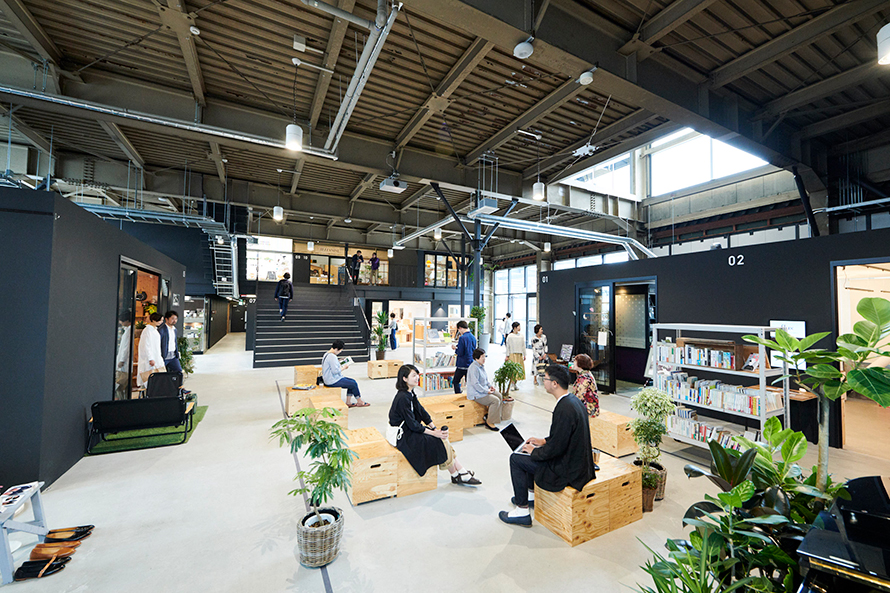
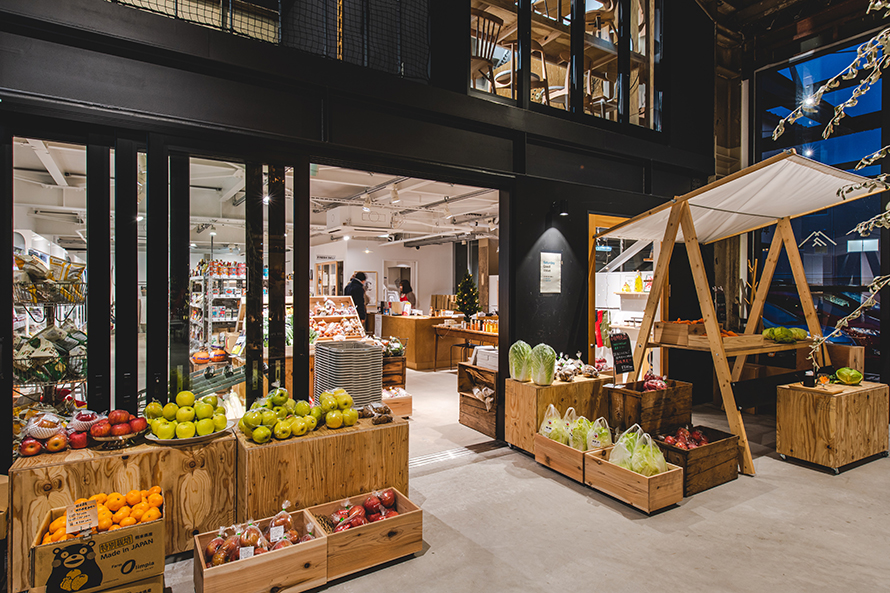
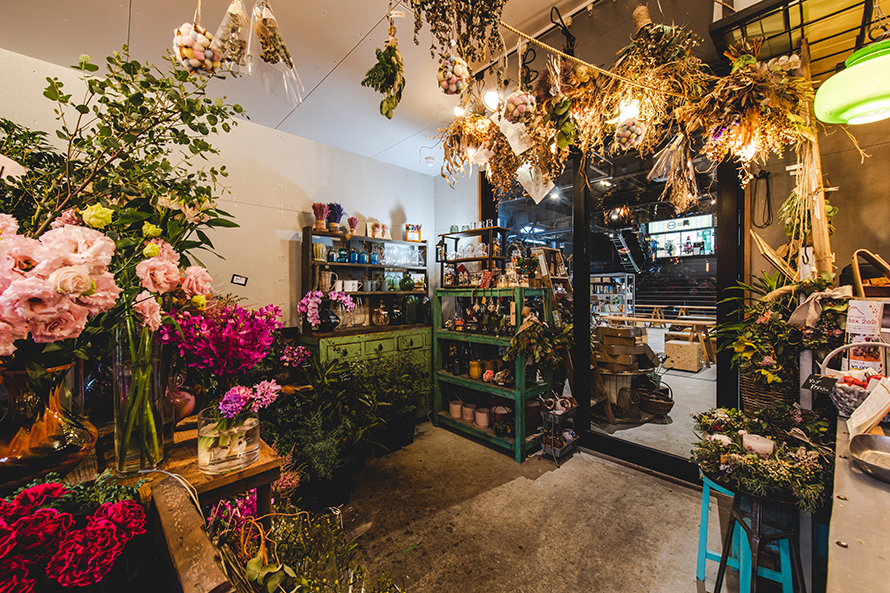
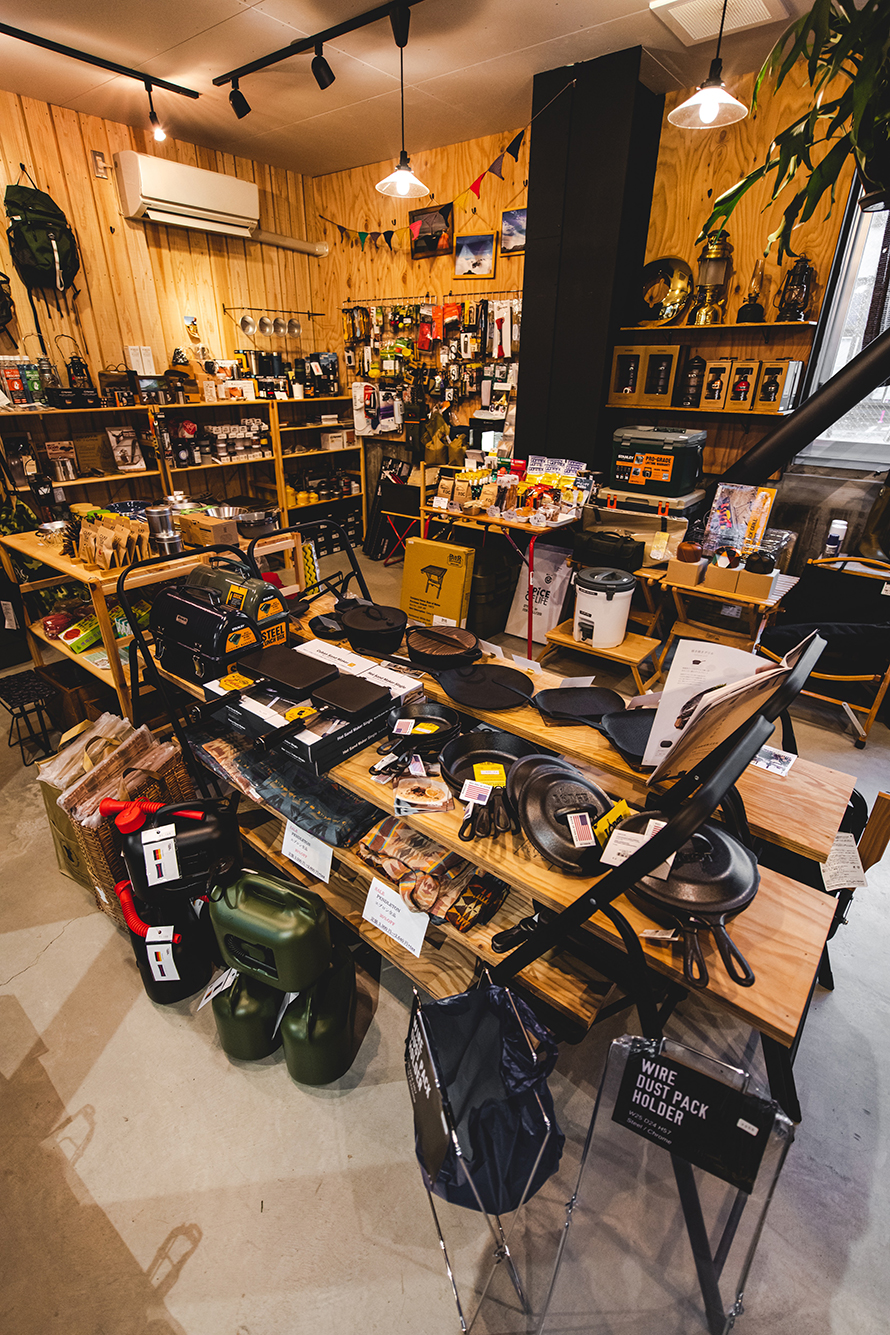
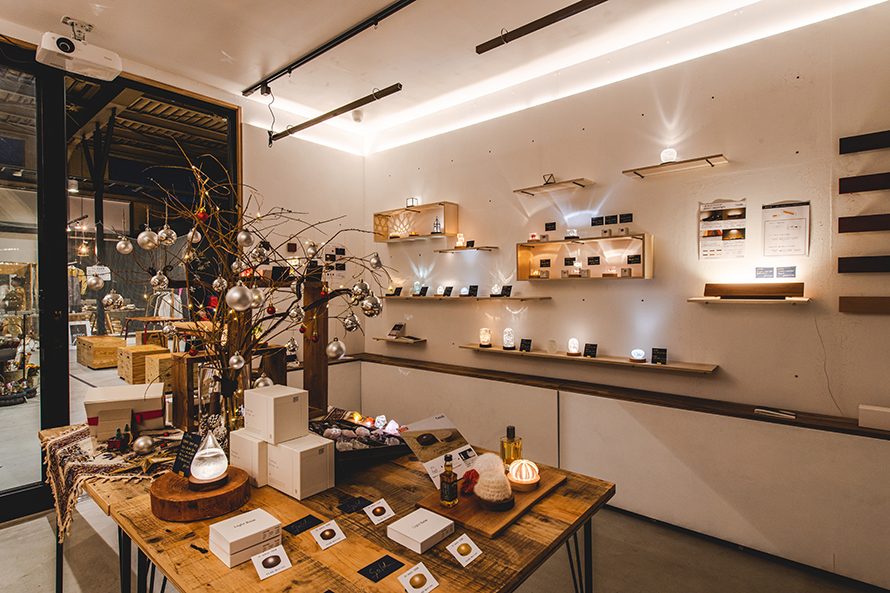





About an hour and a half’s train ride north of Jumonji Station (where Camosiba is located), is Akita Station, the prefecture’s largest station and a stop on the shinkansen line. Situated at a distance of about 20 minutes’ walk from the station is Yamakiu Minami Soko, a commercial complex that opened in 2019 inside the renovated warehouse of Yamakiu, a miso and soy sauce producer.
High ceilings and a bright interior house 10 specialty stores stocking goods selected by discerning owners.
Just inside the entrance is Need The Place, a grocery store selling organic foods free from artificial flavors or colors. In addition to fermented smoked radish pickles known as iburi gakko and other foods unique to Akita, they also sell small snacks like croquettes and fried chicken that are perfect for munching on while wandering around. For 200 yen, you can also sample sake made by Tsuchida Sake Brewery, a company that is particular about excluding additives other than yeast. The flavor differs wildly from type to type, and you can enjoy the unique tastes of each variety.
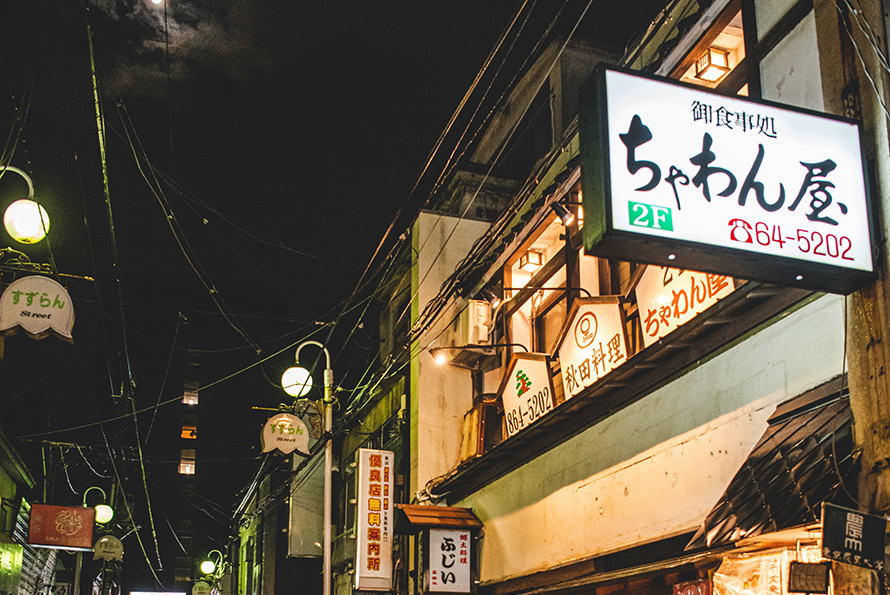
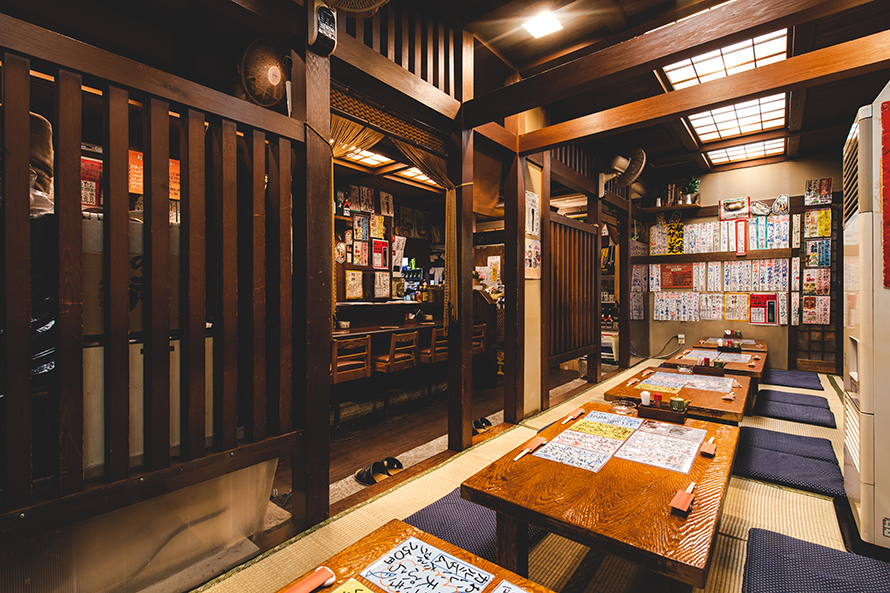
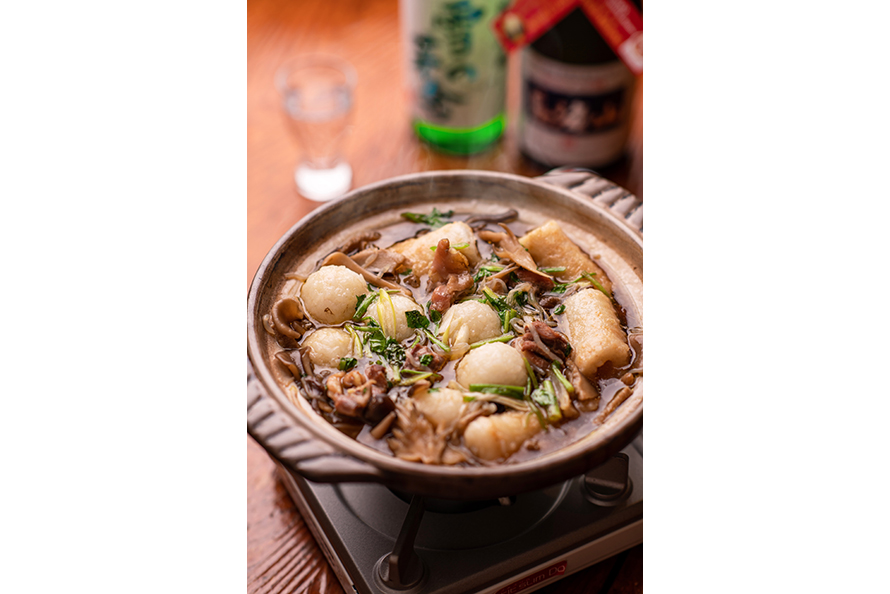
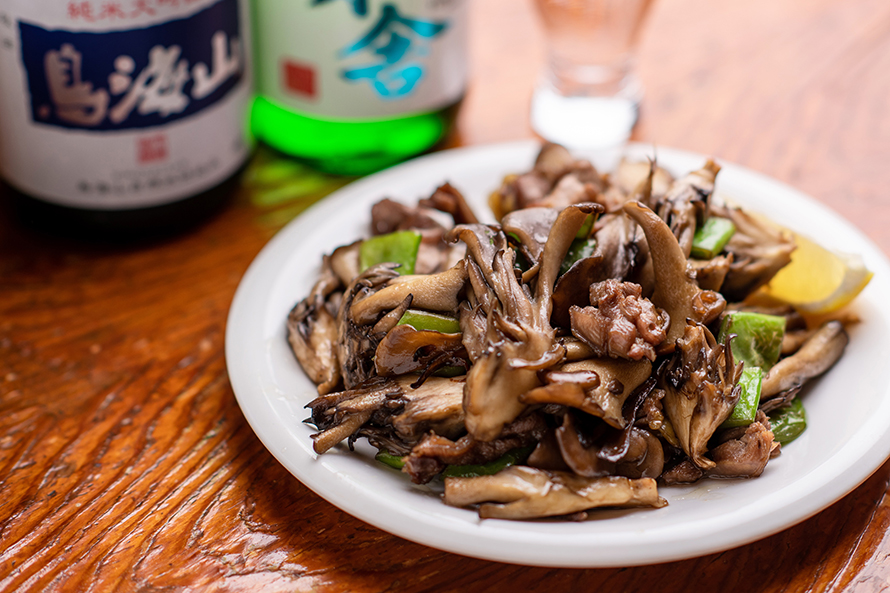
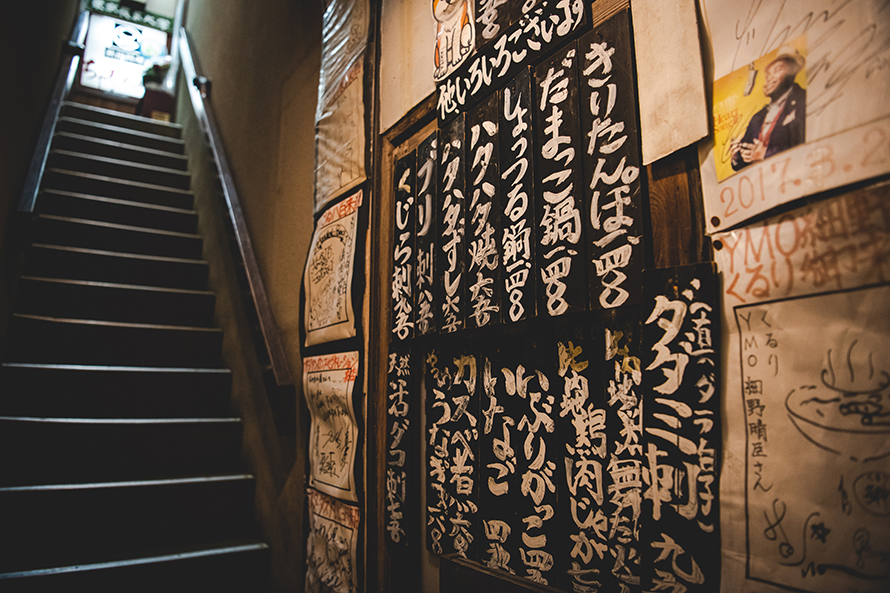





In Kawabata, sitting amidst the restaurants that line the streets of Akita’s busiest shopping district, is Chawanya. This gastropub, which serves local cuisine, was opened in 1977 by the Toyodas, a husband-and-wife team with a desire to create a restaurant serving delicious Akita cuisine and Japanese sake.
Mrs. Toyoda, who believes that “fresh produce is essential for delicious dishes,” sets forth each day searching for just the right ingredients, riding around on her three-wheeler motorcycle for as many hours as it takes. A staple dish on the menu is the Akita specialty kiritanpo nabe (hotpot). Kiritanpo refers to cooked and mashed rice that has been wrapped around a skewer and toasted. To make the hotpot, the toasted rice cylinders are simmered slowly with vegetables in a Hinai-Jidori chicken broth.
Depending on the season, diners can enjoy seasonal produce typical of Akita such as edible wild plants in spring, wild oysters in summer, mushrooms in fall, and sailfin sandfish in winter. Enjoy Akita’s local cuisine paired with over 30 different types of Japanese sake.
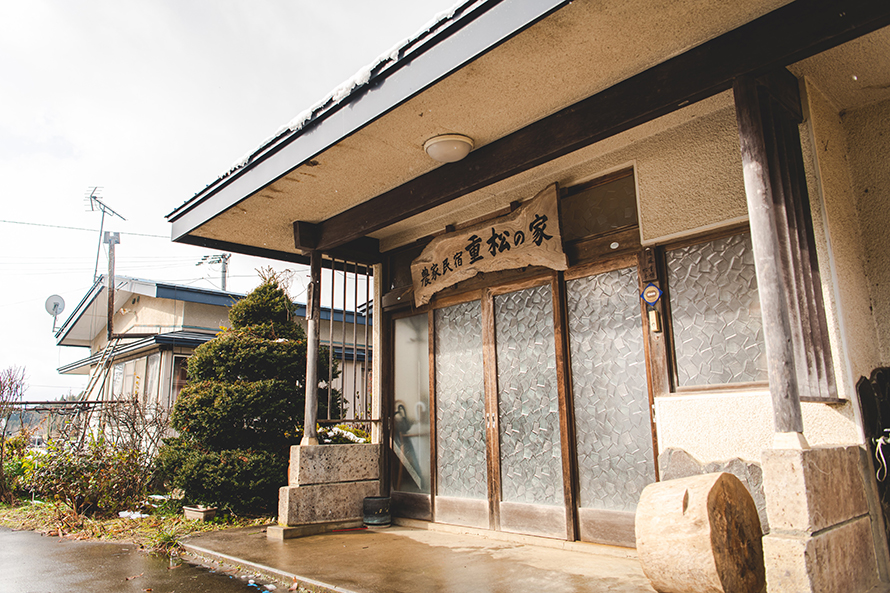
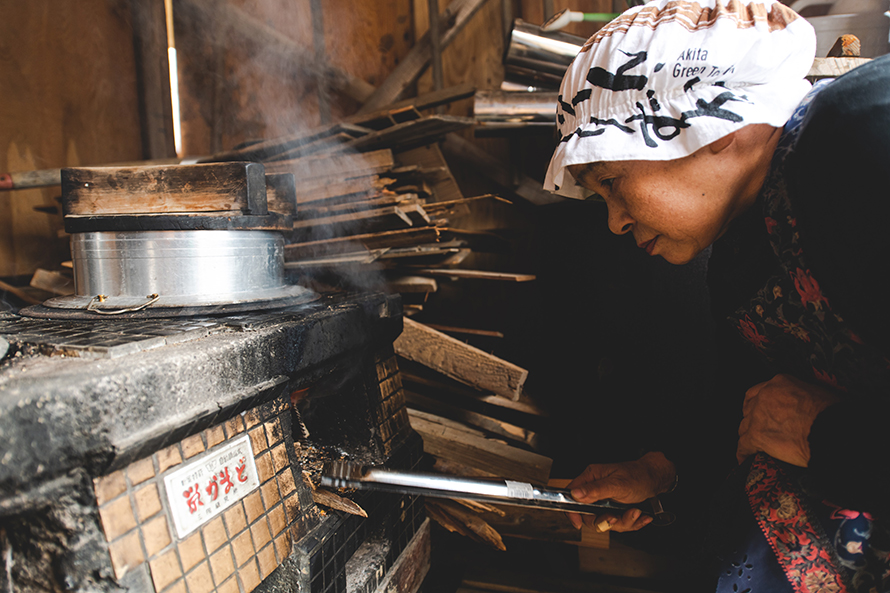
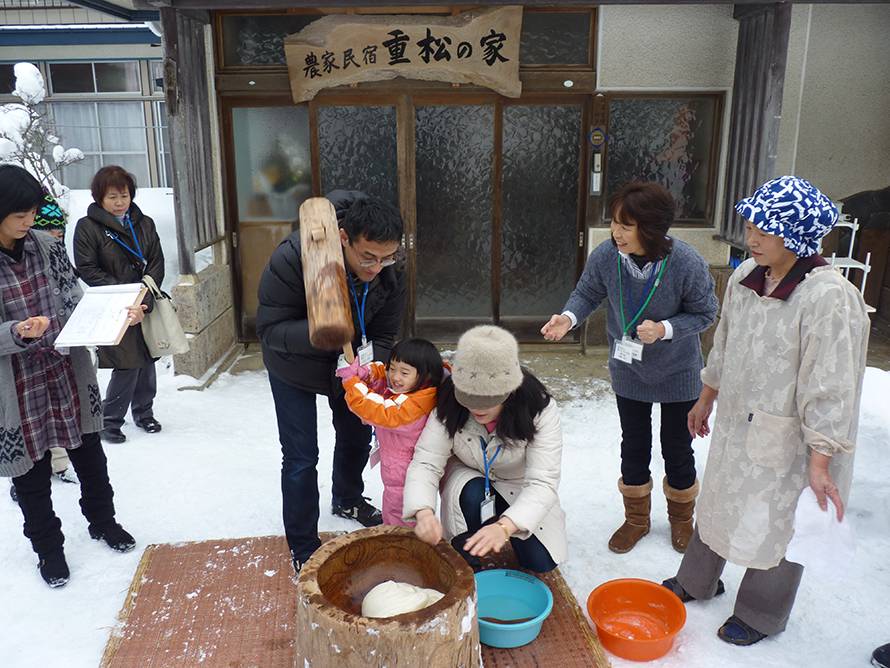
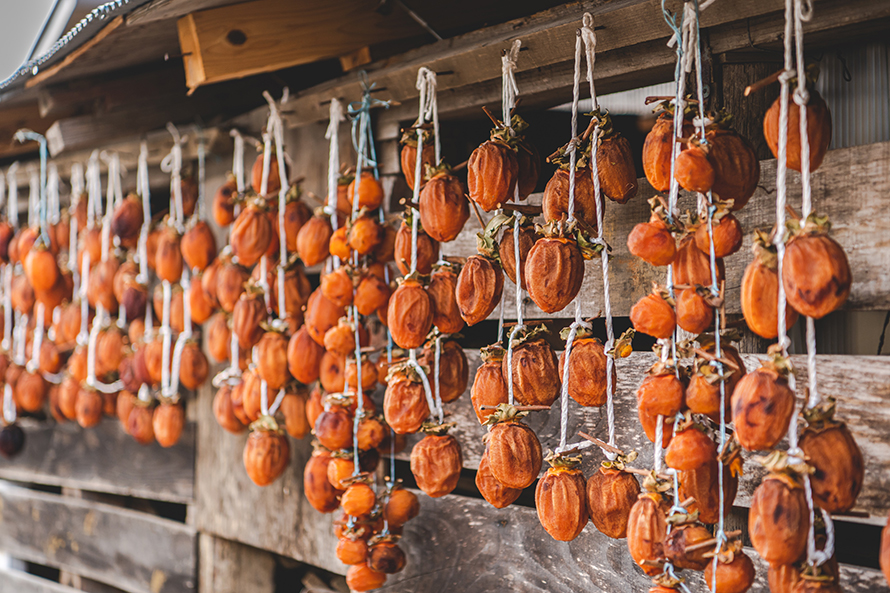




Jumatsu no Ie is an accommodation facility that farming couple, Shigehiro and Yuko Sato, began in 2009 and from which they run farm stays. Jumatsu is the name by which the farmhouse has been called since Shigehiro’s grandfather’s time. Guests say that rice cooked in the kamado (a traditional cook stove fueled by wood or charcoal) is delicious, and the kamado used here is also from his grandfather’s time.
At Jumatsu no Ie, guests not only have the chance to try agricultural experiences such as planting and harvesting rice and vegetables, they can also try seasonal work that has been carried out in local mountain villages for generations, including making miso, pounding mochi to make rice cakes, and making kiritanpo.
The Satos live a practically self-sufficient lifestyle. They grow their own rice and vegetables, collect edible wild plants and mushrooms from the mountains, and catch and eat fish from the rivers. The delicious meals served to inn guests are just what the Satos would normally eat. Try living life in harmony with nature at Jumatsu no Ie.
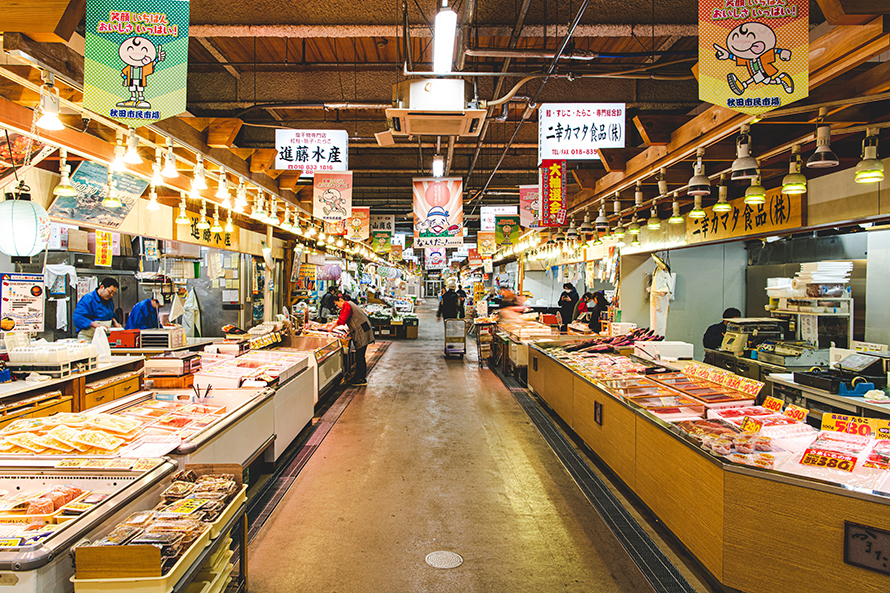
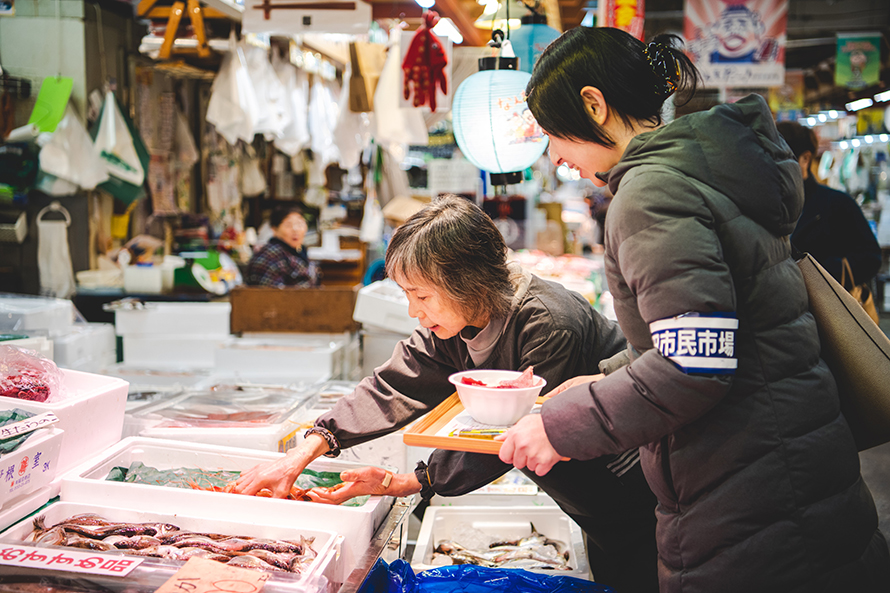
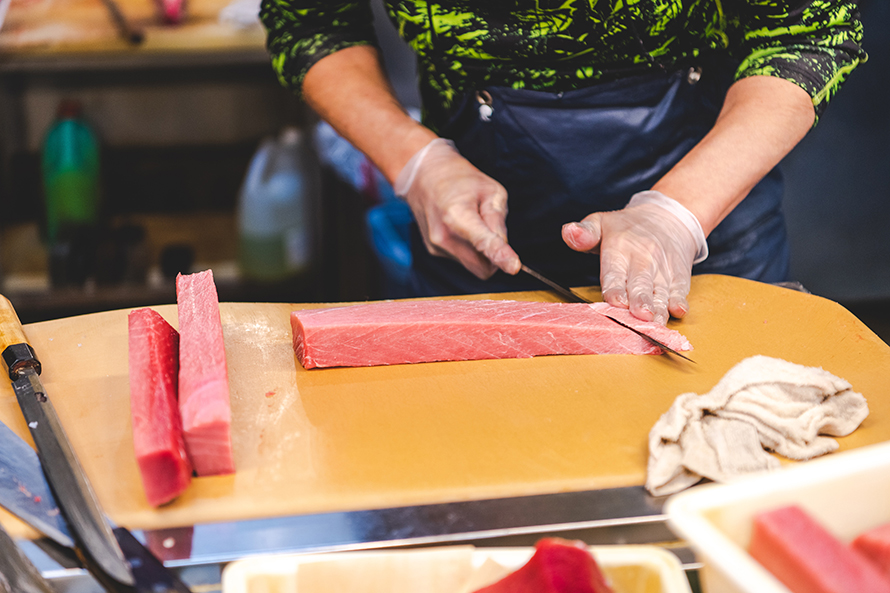
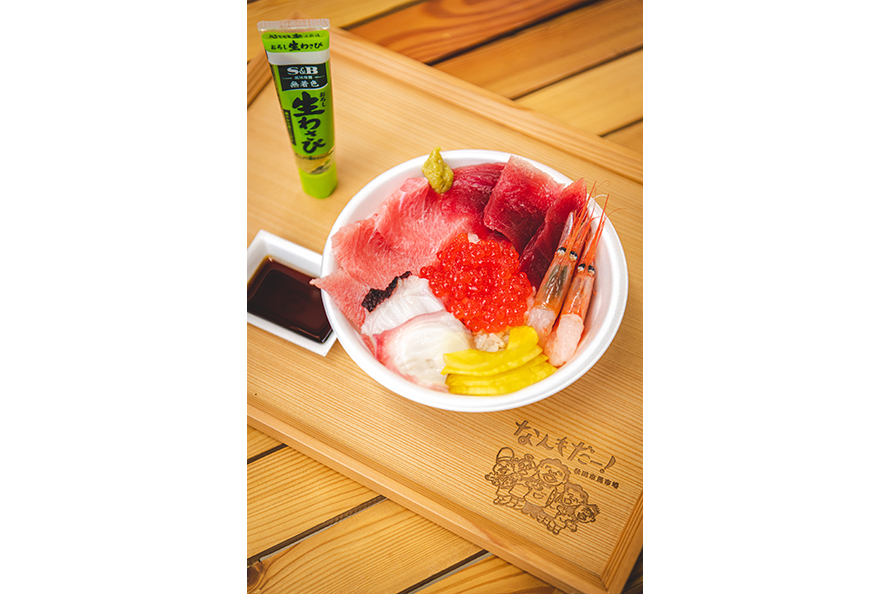




After a night of recuperating at Jumatsu no Ie, it’s time to return to Akita Station and from there to walk approx. five minutes to the Akita Citizen’s Market. The market, which stocks fresh seafood, vegetables, rice and other produce from Akita, is thronged with locals every day. It’s also a great place to buy traditional local foods such as hatahata sushi (sailfin sandfish) made from fermented sandfish caught off the coast of Akita prefecture in winter, and fermented smoked radish pickles known as iburi gakko.
The specialty here is nokke-don. Visitors can purchase fresh seafood and other toppings from the cooperating stores within the market, and layer it on top of rice in an oversized rice bowl dish.
How to make nokke-don: Visit Ichiba no Sakaya (the market liquor store) to pick up a tray, wasabi, soy sauce, and chopsticks (free). Next, purchase the rice at the Sozai Ichiba (delicatessen) for 160 yen. Then make your way around the participating stores identifiable by a light blue lantern, and purchase the items you want to load on your rice bowl from each store. When the donburi is complete, you can eat it at one of the rest areas.
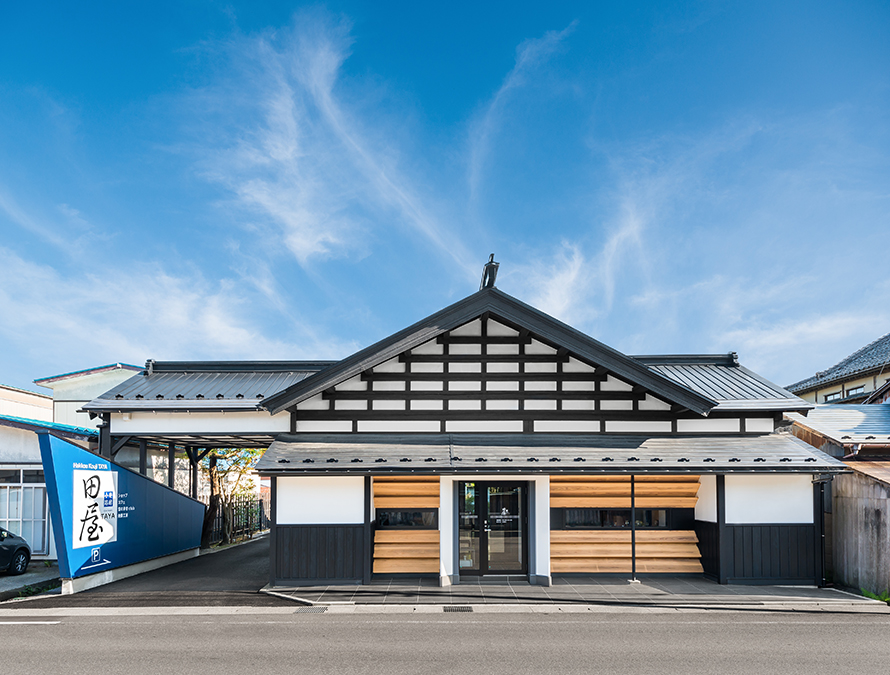
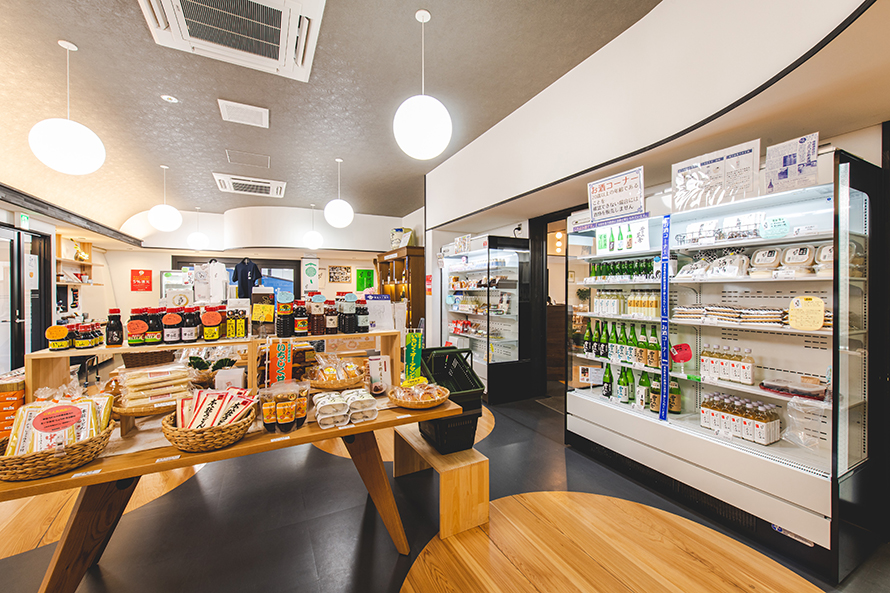
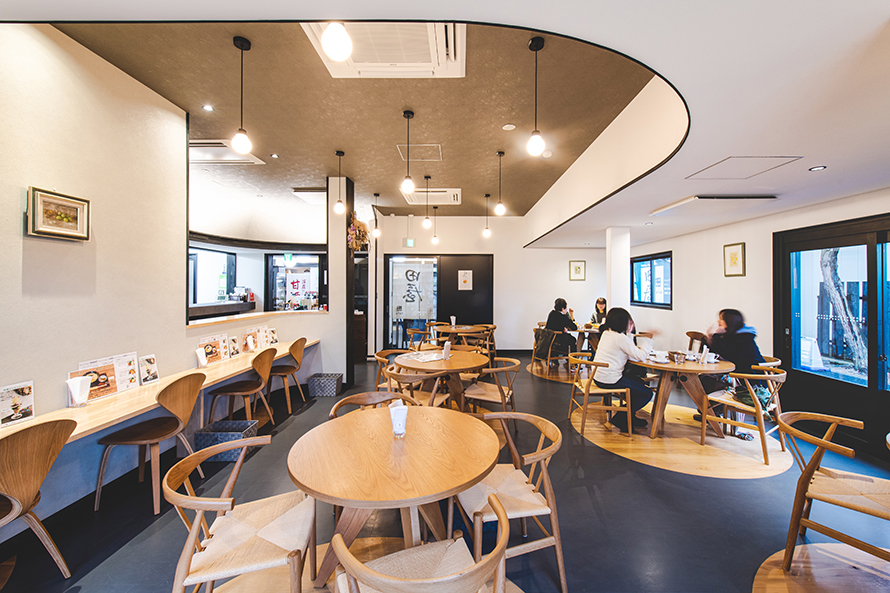
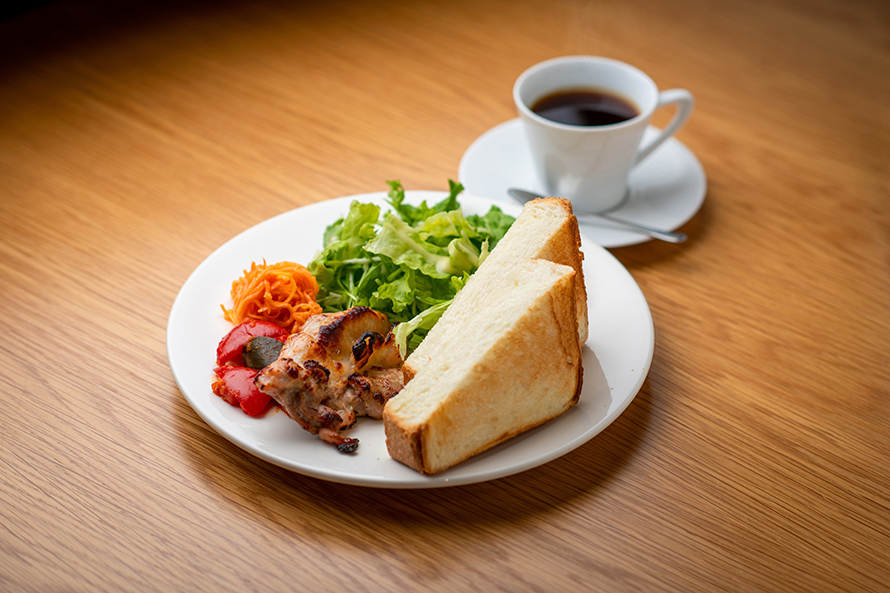
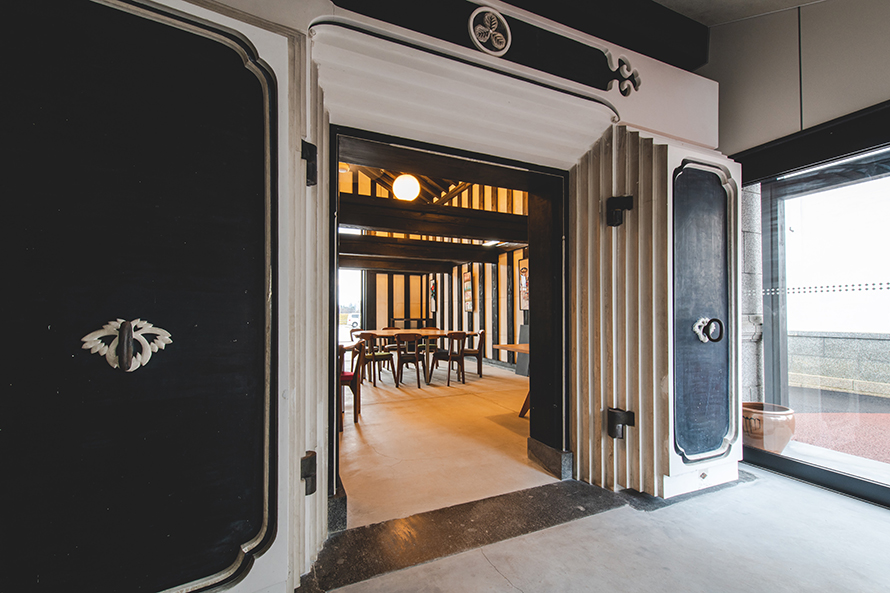





The key factor in sake brewing is the yeast that promotes the fermentation process. In the southwest of Akita is a brewery known as Saiya Shuzo that has been cultivating its own yeast and using it to make sake for the last 20 years. Hakkokoji Taya is a café and shop that opened in July 2019 in the renovated old-style Japanese house where Saiya Shuzo’s warehouse is located.
The shop sells Saiya Shuzo’s sake under the label “Yuki no Bosha,” and amazake (a soft drink made by fermenting rice), as well as pickles made using sake lees, a byproduct of the fermentation process. At the café, visitors can enjoy the delicious taste of bread freshly baked inhouse using the same water source as that for sake brewing, and roast chicken flavored with salted rice malt to bring out the umami. Here you can eat your fill of fermented foods that are healthy for the body.
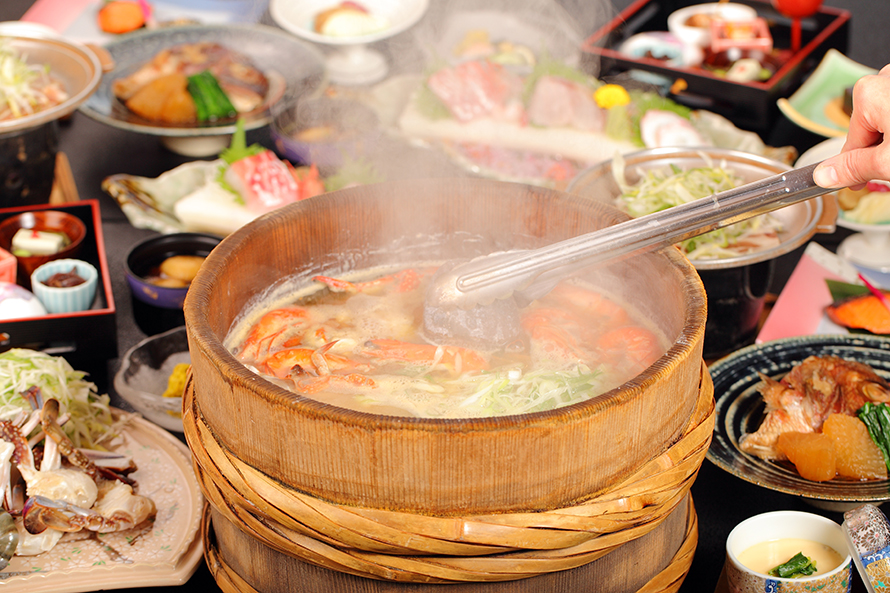
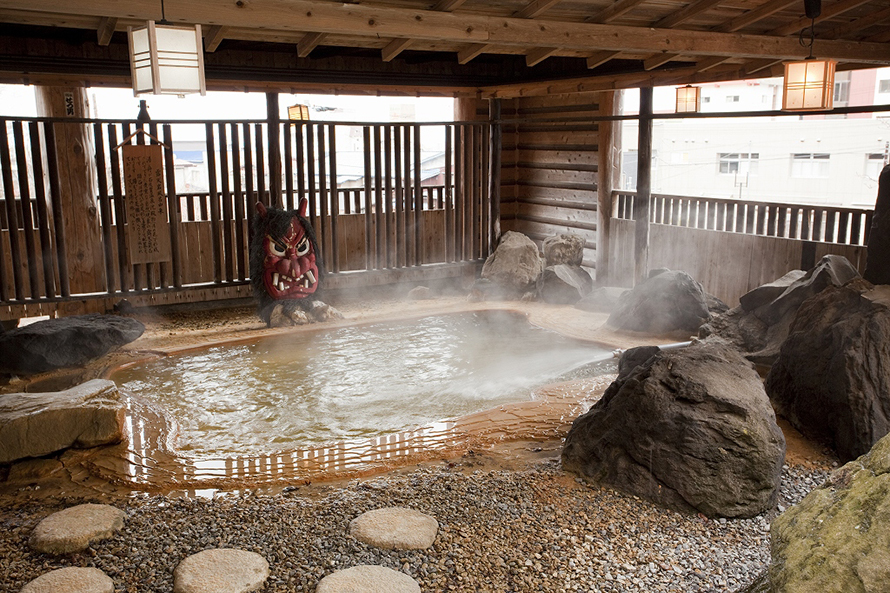
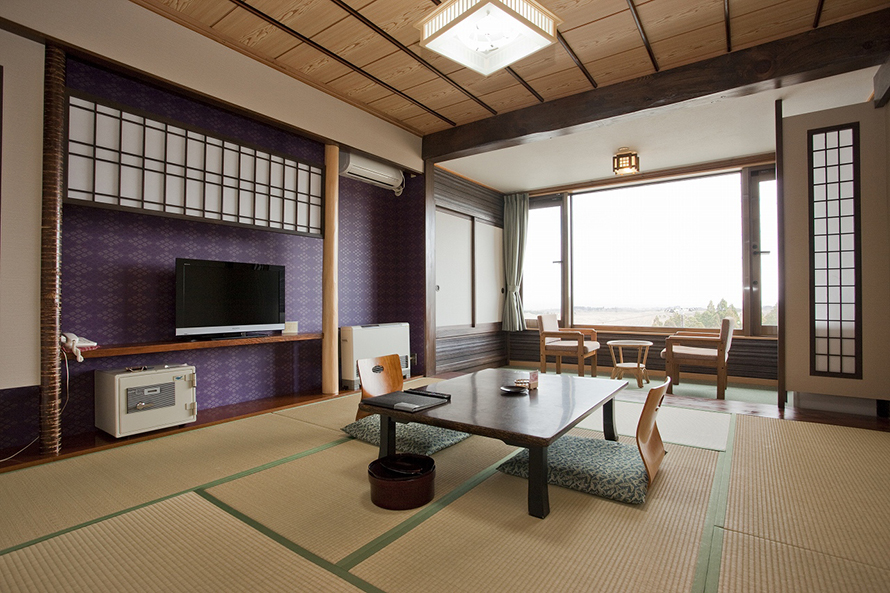
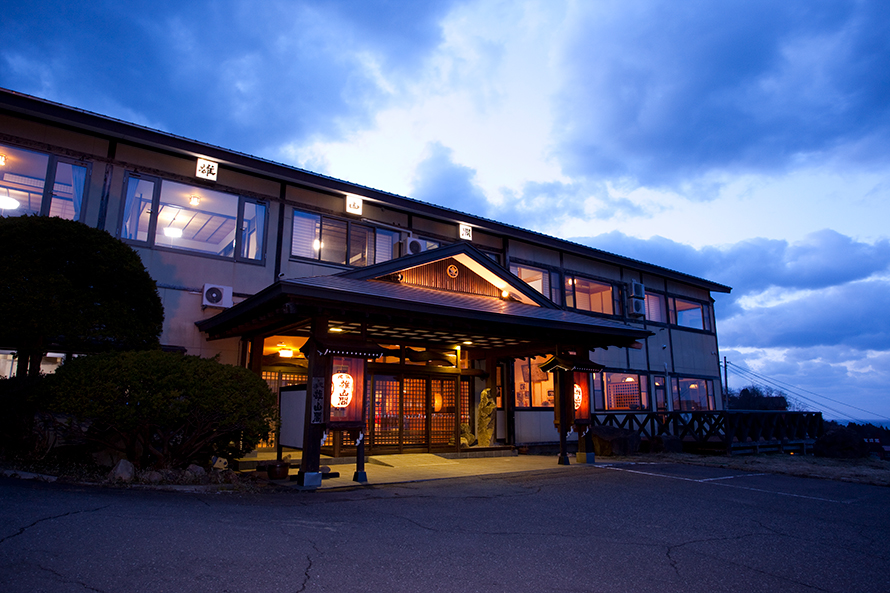




Located in the hills of Oga Peninsula in northwest Akita, Motoyu Yuzankaku is a hot spring hotel that commands wonderful views of the Sea of Japan. A special feature is the hot water that changes color from brownish-red, to green, to white depending on the season and temperature, warming bathers right through to the bones with its gentle touch.
After soaking away any weariness accumulated over the day, why not enjoy Oga’s famed ishiyaki hot stone cuisine. In a type of hotpot cooking originating from traditional old-style fishermen’s meals, a stone baked to an extremely high temperature is dropped – right in front of the diners’ eyes – into a wooden pot containing fresh seafood and soup, thereby bringing the soup to a boil. A cloud of steam whooshes up the instant the stone is dropped in, making for a dramatic moment.
In winter you can try the shottsuru nabe (hotpot) as an add-on. Shottsuru refers to a traditional Akita seasoning in the form of umami-rich fish sauce that is a made by fermenting sailfin sandfish. The nabe, which contains ingredients such as sailfin sandfish, mushrooms, and leek, and is flavored with shottsuru, is a dish that lets diners enjoy the delicious taste of seafood in abundance.
